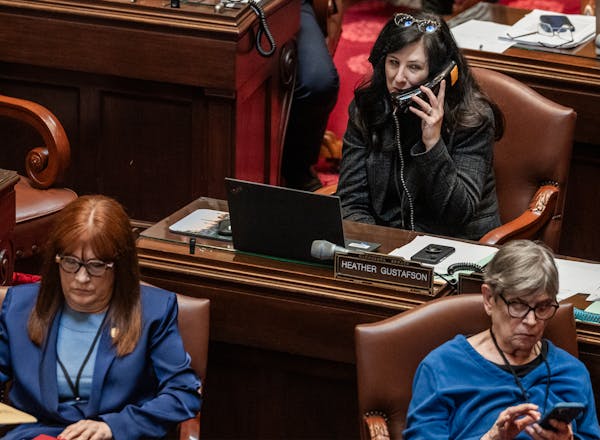The 427-acre megaproject in Arden Hills appeared to be heading for approval Monday night after a prolonged and at times tense discussion.
The town center project as proposed last summer by the master developer for the former Twin Cities Army Ammunition Plant site, known as TCAAP, came in more urban in feel than city officials had expected, with buildings twice as high as the city's five-story maximum.
Council members struggled Monday night to reach a compromise on density that would allow for the unanimous 5-0 vote that Alatus LLC chief Bob Lux had said he wanted, out of concern for the aura around the project.
If there's a 4-1 vote, he said, "the headlines will be about the one, not the four, and it challenges us on the commercial side," with potential clients leery of controversy. "Five to zero would help."
But, based on discussions Monday night, it looked as though 4-1 might well be the final tally. There's a public hearing Dec. 7, and a final vote Dec. 19.
A major topic of discussion was the discovery that the first-class system of parks being proposed for the project comes with a price tag of up to $19 million, which could end up costing each new living unit $11,000, city officials were told Monday.
The result was sticker shock: Council Member Fran Holmes called a fee of that size "way, way too high." There was talk of finding cuts to reduce the cost of parks.
Council members learned that the hundreds of people who turned out for an open house last week emerged with mixed feelings. Many applauded what they saw, but dozens objected to the proposed building heights.
There was a wide gap between the majority and Council Member Brenda Holden, standing up for the public skepticism she said she found when door-knocking this fall. She pushed for hundreds fewer apartments than are in the plan.
Said Council Member Dave McClung, who like Holden was just returned to office:
"At the end of the day we need to move forward. I got re-elected as well; I campaigned as well; I talked to people, knocked on doors, and I did not get the same response as Council Member Holden did. Some were not thrilled but when took the time to sit and talk, some were a little happier. Some weren't."
Open house heavily attended
Tensions over the plan helped promote a strong turnout for the open house, which was intended to gauge residents' response and help council members decide how to reflect community sentiment in their negotiations.
Of the 158 people who signed in and were given surveys, 125 filled them out, the city's staff reported.
On a scale of 1 to 5, with 1 being least satisfied, the average "overall feeling toward the development" was 3.7. That was the same response as the reaction to the "mix of housing," which includes apartments. The median response was a 4, which means it did also have its enthusiasts.
In response to open-ended questions, 33 people argued for keeping the five-story cap in the project's downtown area. Twenty-five people spoke of excessive density without mentioning height, and 18 were OK with a 10-story maximum height.
The results suggest that residents mirror the City Council: Strong reservations from some, amid a broader willingness to accept that the nature of suburbia is changing in an era when transit and therefore higher densities are spreading.
The council seemed determined to approve an agreement before the end of the year. As of 2017 the balance on the council could shift, with an enthusiastic member of the body leaving office of his own accord and a more skeptical figure arriving to take his place.
David Peterson • 651-925-5039

Softball coaches cite gender equity in push to move state finals to U

Expect clearer air this summer in Minnesota, thanks to a milder wildfire season

Offense played with care leads to top ranking in boys lacrosse
Edina seeks to keep badminton title it swiped from St. Paul power

